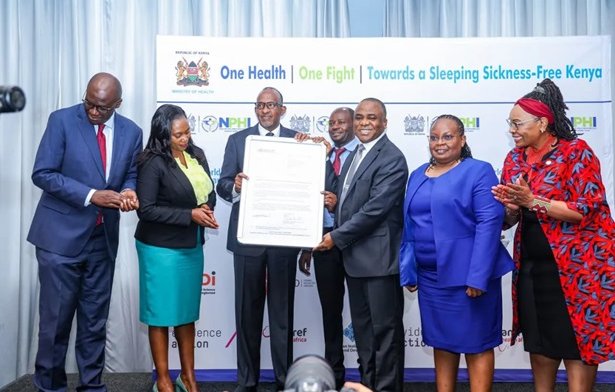The World Health Organization (WHO) has officially validated Kenya as having eliminated human African trypanosomiasis (HAT), commonly known as sleeping sickness, as a public health problem. This achievement makes Kenya the tenth African nation to reach this significant milestone in the fight against neglected tropical diseases (NTDs). Kenya had previously been certified free of Guinea worm disease in 2018, marking HAT as its second eliminated NTD.
Dr. Tedros Adhanom Ghebreyesus, WHO Director-General, praised Kenya’s accomplishment, stating, “I congratulate the government and people of Kenya on this landmark achievement. Kenya joins the growing ranks of countries freeing their populations of human African trypanosomiasis. This is another step towards making Africa free of neglected tropical diseases.”
Sleeping sickness is a vector-borne disease caused by the parasite Trypanosoma brucei, transmitted to humans through the bite of infected tsetse flies. Primarily affecting rural populations involved in agriculture, fishing, animal husbandry, or hunting, the disease is exclusive to the African continent. It occurs in two forms: gambiense and rhodesiense. Kenya’s endemic strain is the rhodesiense form (r-HAT), which is rapidly progressive and often fatal within weeks if untreated, as it invades multiple organs including the brain.
Kenya’s journey toward elimination dates back to early 20th-century detection of HAT cases. Over the years, the country has maintained steady control efforts, with no indigenous cases reported for over a decade. The last locally acquired case was recorded in 2009, while the last two exported cases, linked to the Masai Mara National Reserve, appeared in 2012.
To sustain this success, Kenya has reinforced surveillance across 12 health facilities in six historically endemic counties, equipping them with advanced diagnostic tools and training clinical personnel in sensitive testing procedures. Additionally, the country actively monitors tsetse fly populations and animal trypanosomiasis beyond endemic regions, supported by national veterinary authorities and the Kenya Tsetse and Trypanosomiasis Eradication Council (KENTTEC). This comprehensive approach strengthens the evidence for Kenya’s elimination status.
“This validation marks a major public health milestone for Kenya,” said Dr. Aden Duale, Cabinet Secretary for Health. “It not only protects our people but also paves the way for renewed economic growth and prosperity. This achievement reflects years of dedication, collaboration, and hard work.”
Dr. Patrick Amoth, Director General Health at Kenya’s Ministry of Health, emphasized the joint efforts behind the success, “This key milestone is the result of collaboration between national and county governments, research institutions, development partners, and affected communities. Kenya remains committed to sustaining quality care and vigilant surveillance in line with WHO recommendations.”
With support from WHO and partners like FIND, Kenya’s elimination programme is now implementing a post-validation surveillance plan to detect any potential resurgence or reintroduction of the disease. WHO continues to assist with ongoing monitoring and maintains a stockpile of medicines donated by Bayer AG and Sanofi to ensure rapid treatment of any future cases.
Dr. Abdourahmane Diallo, WHO Representative to Kenya, noted, “This success was made possible by the Ministry of Health’s leadership, dedicated health workers, and key partners. WHO encourages continued engagement in post-validation monitoring to safeguard this achievement.”
Globally, 57 countries have eliminated at least one neglected tropical disease. Kenya joins nine other African countries — Benin, Chad, Côte d’Ivoire, Equatorial Guinea, Ghana, Guinea, Rwanda, Togo, and Uganda — in eliminating sleeping sickness as a public health threat, marking a remarkable step forward in Africa’s battle against neglected tropical diseases.
